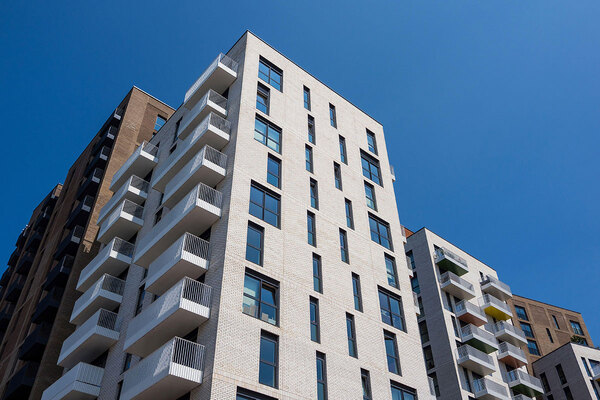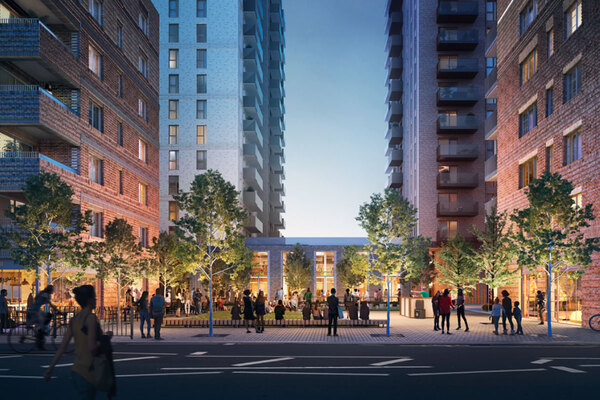You are viewing 1 of your 1 free articles
Build-to-rent has an opportunity to focus on the squeezed middle
The build-to-rent (BTR) sector could play a critical role in meeting the squeezed middle’s needs, writes Sandra Jones, managing director of PriceHubble UK
When we talk about housing affordability, the conversation often jumps straight to social housing or the very top of the market. But the real challenge – and the real opportunity – lies in serving the “squeezed middle”. These renters earn too much to qualify for social housing and too little to comfortably absorb today’s market rents.
The BTR sector could play a critical role in meeting their needs, if only it could unlock viability and deliver enough homes at the right price point.
Cracking the affordability code
The puzzle is simple to state but hard to solve: we need to generate enough revenue to cover the cost of building and operating BTR homes, without pushing rents beyond what middle-income households can afford.
PriceHubble’s Rental Market Analytics dataset gives us a unique insight into the challenge. We can see exactly what renters earn, what they pay in rent and how the ratio between the two is shifting over time. The trend is clear: renting households are spending an ever-greater share of their income on rent. And for many, that share is already well above the conventional affordability threshold of 30%.
1.24 million households under pressure
The numbers tell a stark story. Around 1.24 million households earn between £30,000 and £50,000 and rent privately. That’s nearly a quarter of the private rented sector. Two-thirds spend more than 30% of their income on rent, and one in four spend 40% or more.
This group is the beating heart of the UK workforce. Around half are in London and the South East, 43% are single-person households covering all bills alone and a fifth work in health and social care, where the prospect of significant pay increases is limited.
These are not transient renters but established households, many in their 30s and 40s, who are being forced to make compromises just to stay housed.
Shrinking homes, shrinking choices
One of the most telling signals in the data is downsizing. Over the past five years, the proportion of families in this income group renting three or four-bedroom homes has fallen by almost 8%, while the share in one and two-bedroom homes has risen by a similar amount.
This is “space or place” decision-making in action. To stay within their affordability envelope, renters give up space, accept poorer quality homes or move further away from work. Energy Performance Certificate ratings show that middle earners are more likely than higher earners to end up in homes rated below C, meaning they are sacrificing quality as well as size.
Why BTR is perfectly placed to help
At its best, BTR offers exactly what the squeezed middle needs: well-managed, energy-efficient homes, in convenient locations, with predictable rents and professional management. It has the potential to give households the stability they want without forcing them to choose between space, quality and location.
But to deliver at scale, the sector must solve the viability puzzle. That means aligning construction costs, finance and operations with mid-market rent levels. It also means collaboration between developers, investors, and policymakers to unlock land, streamline planning, and structure schemes that work for the households we most need to serve.
Building the right homes, not just more homes
Analysis shows that the income distribution of BTR tenants broadly mirrors the wider private rented sector. In other words, BTR already serves middle earners – but not yet at scale.
It could go much further. The potential exists for BTR to expand affordable supply where it is most needed, reduce pressure on other tenures and support families and key workers across the country, but without sufficient supply of quality rental homes, middle-earning households (nearly a quarter of the rental market) will be forced into other tenures they cannot afford, increasing pressure on subsidised housing.
Sandra Jones, managing director, PriceHubble UK
Sign up to our weekly Living newsletter
Sign up to Inside Housing Living’s newsletter, bringing you exclusive analysis and big deals from the wider residential market, including build-to-rent, student living, later living, for-profit registered providers and more.
Click here to register and receive the Living newsletter straight to your inbox.
And subscribe to Inside Housing Living by clicking here.
Already have an account? Click here to manage your newsletters.
Related stories







